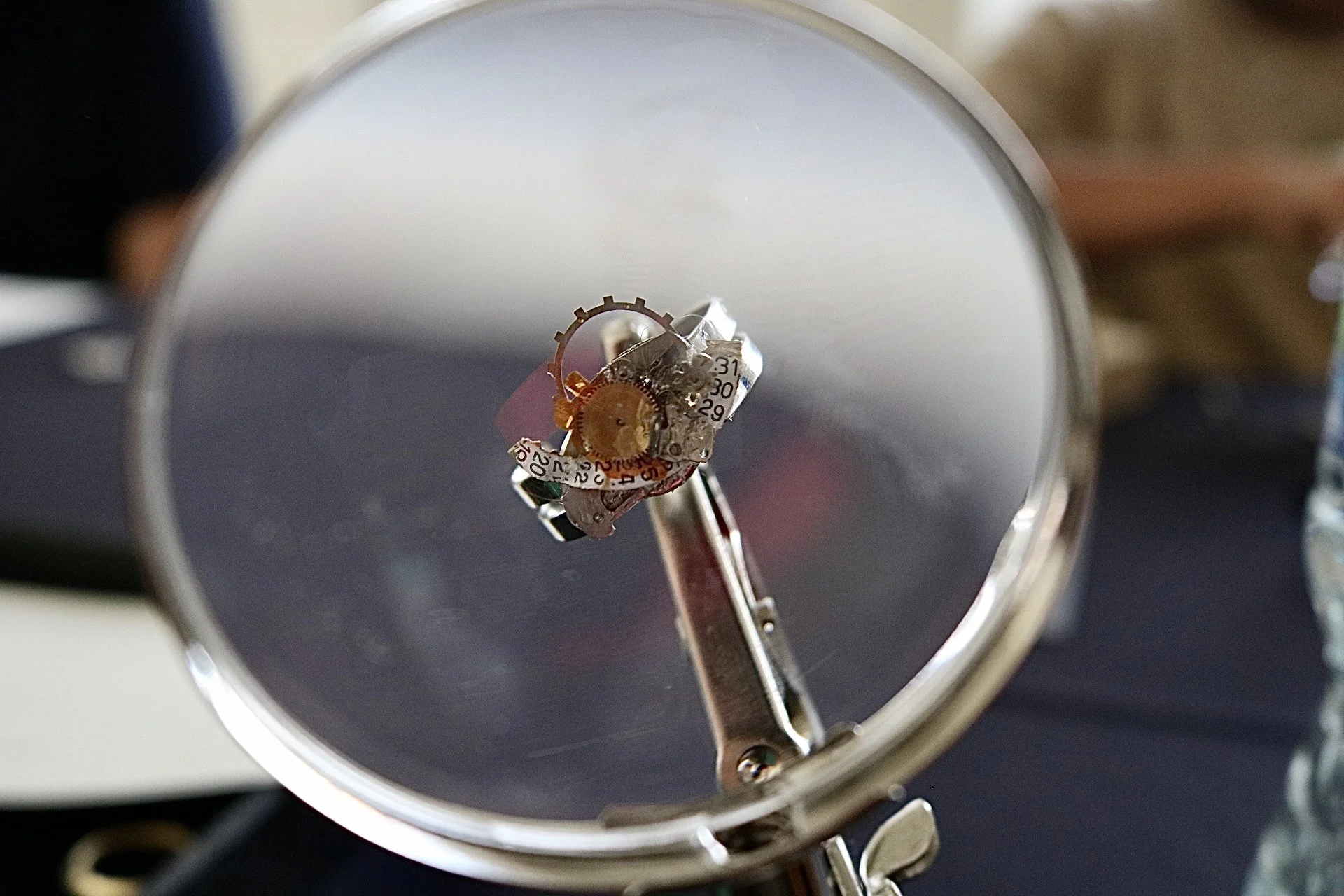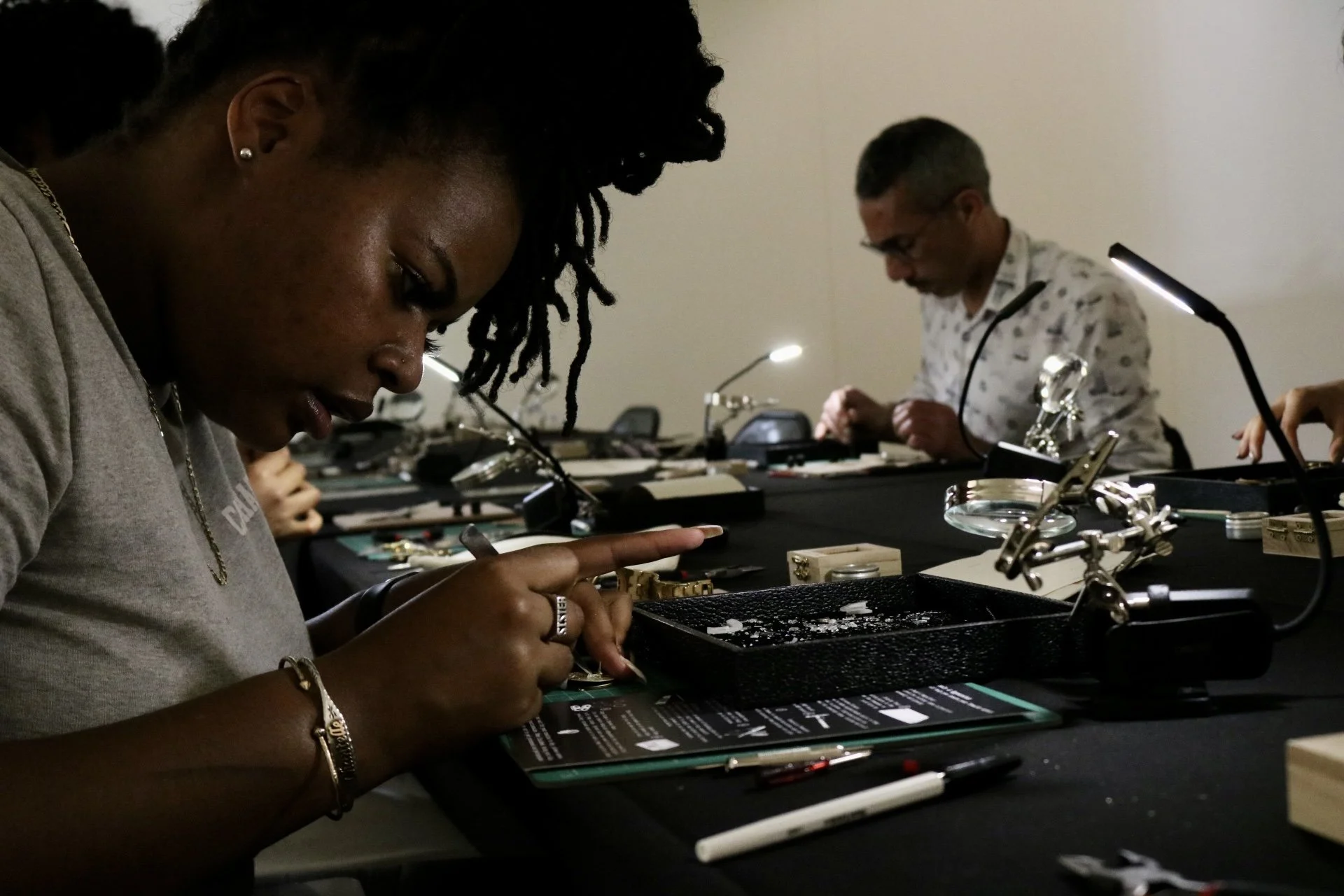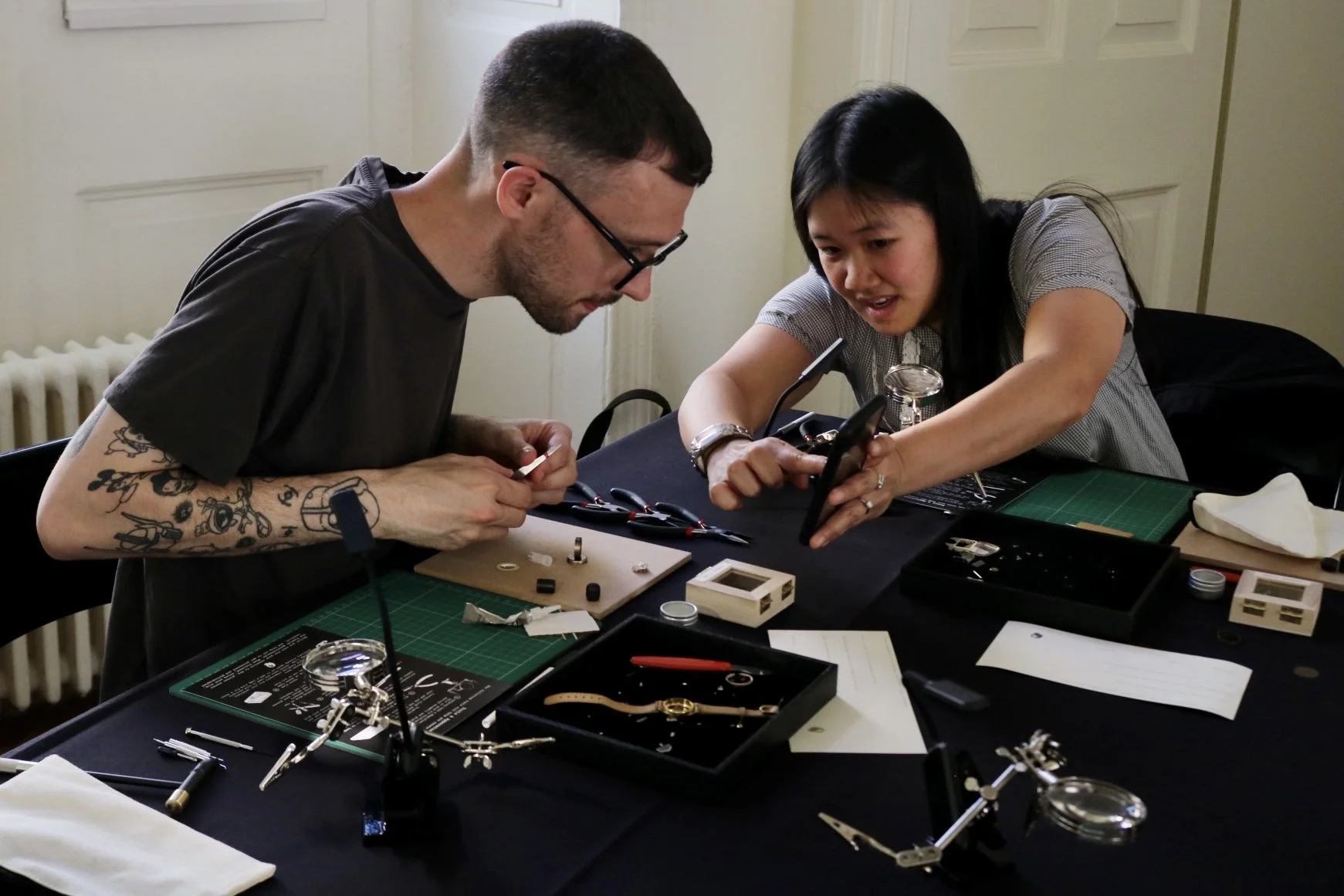Time lab
"I dived down into the depth of the ocean of forms,
hoping to gain the perfect pearl of the formless."
Rabindranath Tagore
Time Lab is a participatory installation where visitors are asked to deconstruct a piece of T I M E with an invitation to dismantle a broken or forgotten wristwatch or clock that belongs to them. Once dismantled audiences reconstruct the pieces to form an item of jewellery or sculpture that is theirs to take away and enjoy. Once participants finish their timepieces, they are photographed. A record of each person and piece created is held in the Time Lab archive.
The process aims for participants to be able to reflect on time as they dismantle the very tools of measuring the passing of time.
*The project asks participants to bring to the laboratory unused or broken watches or other types of timepieces that will be broken open. During a residency Abigail invites collaborations between local business and community members to create deposit centres for old, or unwanted watches that can be up-cycled in the laboratory.
Originally developed with the support of West Yorkshire Playhouse & Undercurrent Festival. Labs have been set up in Australia, China, Korea, Ireland and the UK.
Reviews:
After Lights Fade
The Scotsman
Photos Abigail Conway & Jade Radley
Total Theatre Review of Timelab
Forest Fringe, Edinburgh, 13th August 2016
This delightful piece by Abigail Conway (one half of the company part of subject_to_change) isn't really a show at all. Rather (developing one aspect of subject_to_change’s work) this is a participatory event, though to use the word event suggests something grander and more ostentatious than the delicately poised understatement that is TimeLab.
Over the course of an hour, Conway invites her participants (six at a time) to take a watch (preferably one that they have bought with them - broken or unwanted), break it apart and from the pieces construct a micro-sculpture. Conway proposes that the resulting object (through the provision of armatures) might take the form of a ring, a brooch, a pendant, or something else. In this act of audience creation the intricately functional is remade as the delicately beautiful.
The title TimeLab suggests that we are required to adopt something of a scientific mindset to the manipulation and arrangement of tiny components into an aesthetic object - a kind of inquisitive research into the mechanics of marking and dividing time. Whilst this is undoubtedly there in the tactile and dextrous demands made upon the participant, the focus and diligence needed to complete the task also serves a less tangible but no less concrete function - that of serving as a kind of meditative act, a zen-like uncovering of things that might normally be ignored in the onward flurry of our time-marked lives.
This stripping away begins with the focus needed to attend to the act of selection of the minute clock-work components and then their placement into new relationships. This act requires a single-minded concentration married to a kind of attendant overview of the possibilities of the resulting sculptural arrangement. At once this is both a kind of zoning in and pulling back - a strange and deliciously oscillating experience. And, of course, it stills time. Because the choices to be made cry out for meaning, it also begins to distill these choices into almost ritual expressions of our relationship to time. Memories surface, fragments of experiences tick-tock back and forth, and points in life come into focus. TimeLab then is a kind of re-forging of the past and the present, such that time itself is shaped and bent, so that it is not just divided and marked, but actually captured in brass, steel and copper.
Thomas Wilson
























